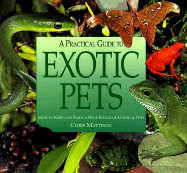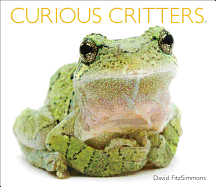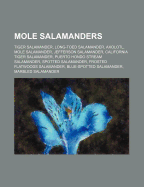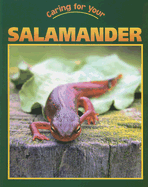 |
| Evan Brand (c) 2012 |
You will find dozens of spotted salamanders slowly crossing the road toward their breeding areas. (Last year, my son and his girlfriend spent about an hour, in the rain, moving salamanders across the road. They are commonly hit by cars during breeding season -- some locations post signs warning motorists of their presence).
When not heading toward their breeding areas, these nocturnal critters spend their time hidden in dark, damp locations. (The winner of our annual contest nearly always found the first salamander in the wood chip or compost pile while dressing spring flower beds).
Salamanders of Connecticut
There are a number of salamanders native to Connecticut, but I have only seen three of them in my outdoor experiences: the spotted salamander, the red-backed salamander, and the red eft. The pictures below are from Connecticut Amphibians.
Spotted Salamander
 |
| Himmelman (c) 2011 |
They eat worms and insects and other smallish creatures. They are fairly slow moving, and very interesting to examine. They do not live well in a terrarium, so observe them and let them go.
I read that these salamanders live 10 years or more. I think that's amazing.
Red-backed Salamander
One of the most abundant salamanders in Connecticut, it is hard to turn over a log or rock without finding several red-backed salamanders in some parts of the state. They do not depend as heavily on water as the other salamanders, and spend their entire life on land, only needed damp areas to complete their life cycle, but not standing water.
 |
| Himmelman (c) 2011 |
They are easy to identify, with their slender dark brown or gray bodies, and the reddish-brown, wide band along the length of their body. Their tails are very long, making their bodies about 3 inches long, but they are very slim.
These are fast moving, hearty little fellows, and can be kept for a period of time in a terrarium (kept moist), if fed ants, aphids and other small insects.
Red Eft (Red-Spotted Newt)
 I loved this little fellow when I was a child. The red eft is a common resident of wet areas (although they seem to be particular in their locations, as I have not seen one where I live now, but they were quite common when I was growing up). The red eft is a bright red-orange color, with brilliant red spots bordered by a fine black ring.
I loved this little fellow when I was a child. The red eft is a common resident of wet areas (although they seem to be particular in their locations, as I have not seen one where I live now, but they were quite common when I was growing up). The red eft is a bright red-orange color, with brilliant red spots bordered by a fine black ring.  One of the most interesting parts of the red eft life cycle is that they begin it, and end it, as aquatic creatures. Unlike most salamanders, which look somewhat like tadpoles as aquatic juveniles, then emerge to finish their lives as terrestrial creatures, the red eft spends about 3 years as a, well, red eft, then returns to the water, where it becomes greener (still retaining the red spots), grows gills again, and develops caudal fins so the tail becomes a rudder.
One of the most interesting parts of the red eft life cycle is that they begin it, and end it, as aquatic creatures. Unlike most salamanders, which look somewhat like tadpoles as aquatic juveniles, then emerge to finish their lives as terrestrial creatures, the red eft spends about 3 years as a, well, red eft, then returns to the water, where it becomes greener (still retaining the red spots), grows gills again, and develops caudal fins so the tail becomes a rudder.Studying Spotted Salamanders
Inside Preparation
 1. Read pp. 187-192 in the Handbook of Nature Study. You might also find websites such as Connecticut Amphibians helpful, for more information on the specific salamanders you might find in your area.
1. Read pp. 187-192 in the Handbook of Nature Study. You might also find websites such as Connecticut Amphibians helpful, for more information on the specific salamanders you might find in your area.
2. Gather supplies that you will need for your outdoor excursion: flashlights, clipboards and sketching materials (remember that you will be observing at night time, so you won't be lingering a long time to draw in the dark). We have had luck bringing a digital camera and taking pictures by the light of the car headlights. Bug spray is probably a good idea, and any other mosquito protection you might need (remember, you'll be in mosquito heaven where you'll be salamander hunting!).
Salamander Observations
1. You will have the best chance of seeing spotted salamanders in late winter or early spring (here, in Connecticut, we find them in late March or early April, depending on the weather). Salamanders like very cold water for their egg-laying, but they are cold-blooded, so the air temperature has to be warm enough for them to move, but not so warm that the water is too warm for their eggs.
2. Dark roads along a marshy or swampy area are the best places to look for spotted salamanders. If you are not sure where to look, contact your local environmental agency, parks and recreation department, or university for information. Or ask other naturalists that you know.
3. When you find the salamanders, they will be moving slowly (remember, they are cold-blooded), and will likely be crossing the road from woods to water. [NOTE: Animals such as frogs, salamanders and turtles, that move from woods or field to water to mate, and cross the road in the process, will only recross the road if you put them back where they came from. If you want to help them, carry them across the road in the direction they are heading. Their instinct will take over if you put them back, and they will just head to the road again.]
4. Handle the salamanders carefully, as their bodies are soft and easily damaged.
- Describe the area where you found the salamander. Is it dry or wet? Is there water nearby? What type of body of water is it? Make a quick sketch of the area, showing what the salamander was leaving, the road and where the salamander was going.
- Describe the movement of the salamander. What words describe the movement? Was it fast or slow? Notice how the salamander moves its legs. Does it move both legs on one side first, then the other, or does it criss-cross (right front and back left then vice versa)?
- Sketch or photograph the salamander. Carefully count the number of spots on its back (some variations or species of creatures are distinguished by the number and arrangement of the spots).
- Carefully pick up the salamander and observe its face. Draw a quick sketch of its face, paying attention to the pupil of the eye (the black part), which is an interesting shape in salamanders. [NOTE: Do not take a close-up flash photograph of the salamander's face -- how would you like that?]
- Carefully examine the feet. Sketch or photograph the front foot, and then the back foot. Do they look the same? If they are different, why do you think they are?
- Measure the body and tail. Are they the same length? [NOTE: This is a fine opportunity to teach your kids about using non-standard units of measure, such as finger joints, to approximate measure. We don't always have a ruler, but we always have our fingers!]
- Observe the salamander on the ground. Return the salamander to the marshy area. What does it do? Where does it go?
Follow-up Work
Enchanted Learning has study sheets on salamanders, showing their life cycle, and the red eft life cycle. There are also blank cycle organizers for you to review the salamander life cycle, using drawings or copies of your photographs to complete the organizer.
The Notebooking Treasury is having a spring sale on their nature study materials. Click the link below for more details.
Books for Your Library








No comments:
Post a Comment